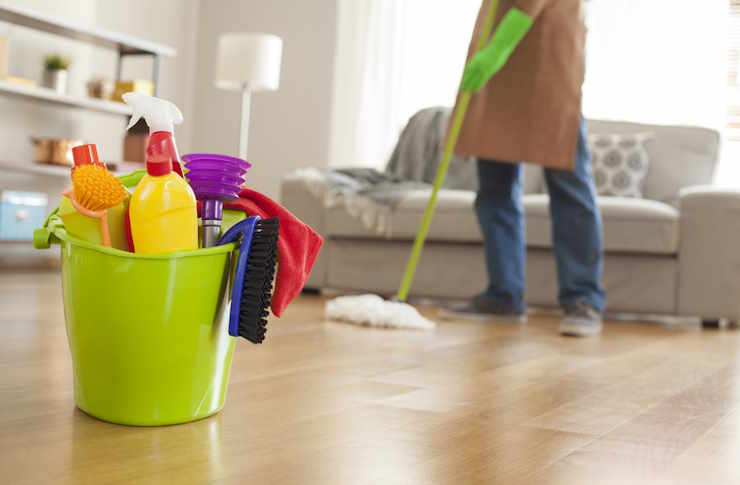Top Cleaning Methods That Save Time Without Losing Results
Many households are discovering that effective cleaning doesn’t always require long hours. Certain approaches make it possible to maintain a tidy space with greater efficiency, focusing on small, consistent actions rather than exhausting routines. These methods highlight how thoughtful organization and modern techniques can keep a home in order without compromising quality. Explore which strategies people rely on today to save time while still achieving noticeable results.

Many people assume that a spotless home requires hours of effort, but smart planning can make cleaning feel lighter and more manageable. Instead of waiting for dirt and clutter to build up, a few structured routines, simple habits, and well-chosen tools can dramatically reduce the time you spend while still leaving your rooms hygienic and comfortable.
Time-saving cleaning strategies that work
Effective time-saving cleaning strategies start with reducing how often you repeat the same effort. One useful approach is to clean by “zone” rather than by random tasks: finish the kitchen completely, then move on to the bathroom, instead of jumping between rooms. This minimizes walking back and forth and keeps your mind focused.
Batching tasks is another powerful technique. Do all dusting at once, then all vacuuming, then all mopping. When you use one tool for several rooms in a row, you waste less time switching supplies. Short, focused sessions also help: setting a 15–20 minute timer for a specific area encourages quick decisions and keeps distractions low.
Finally, prepare before you start. A small caddy with your most-used products and cloths saves repeated trips to the cupboard and keeps your routine predictable, which naturally speeds things up over time.
Efficient methods for maintaining cleanliness
Efficient methods for maintaining cleanliness focus on prevention as much as on actual scrubbing. A simple principle is “clean as you go.” Wipe kitchen counters immediately after cooking, rinse the sink after brushing teeth, and return items to their place instead of putting them down “for now.” These actions take seconds but prevent bigger messes from forming.
Another helpful method is following a logical order: always work from top to bottom and from dry to wet. Dusting high shelves and light fixtures before vacuuming stops you from cleaning the same surface twice. Vacuum or sweep floors before mopping so that you do not drag crumbs through the wet area.
A regular weekly rhythm also supports maintenance. For example, you might assign specific days to particular zones: bathrooms one day, floors another, and bedding on a separate day. This spreads the workload, keeps tasks small, and makes it less likely that anything will be forgotten for weeks.
Small habits that improve daily cleaning
Small habits that improve daily cleaning are often easy enough to become automatic. Making the bed each morning gives the whole room an instant sense of order and can motivate you to keep surrounding surfaces clear. Placing a laundry basket where clothes naturally accumulate encourages you to put items in the basket instead of on chairs or floors.
Another powerful habit is the one-minute rule: if a task takes less than a minute, do it immediately. Hanging up a coat, returning dishes to the kitchen, or wiping a small spill before it dries all fall into this category. Over a day, these tiny actions prevent clutter and stains from multiplying.
You can also build short reset moments into your routine. A five-minute tidy before leaving the house and a ten-minute evening reset—putting toys away, loading the dishwasher, and clearing main surfaces—create a stable baseline of order. When quick resets are consistent, deeper cleaning sessions become faster and more straightforward.
Modern tools that support quick routines
Modern tools that support quick routines can significantly shorten the time needed to reach the same level of cleanliness. Microfiber cloths, for example, trap dust and dirt more effectively than many traditional rags, often reducing the need for heavy cleaning products. A cordless vacuum helps you move quickly between rooms without plugging and unplugging cables.
Spray mops with refillable bottles are useful for frequent light mopping, especially on hard floors in kitchens and hallways. They make it easy to spot-clean spills or footprints without filling a full bucket each time. In some homes, robot vacuums or robot mops can maintain daily floor cleanliness, leaving only edges and detailed areas for manual attention.
It is still important to match tools to your space and lifestyle. A large home may benefit from more powerful equipment, while a small apartment might only need a compact vacuum, a couple of microfiber cloths, and a simple mop. The right tools are the ones you will actually use consistently.
Balancing speed and effectiveness in home care
Balancing speed and effectiveness in home care means recognizing that not all cleaning tasks are equally urgent. Hygiene-sensitive areas such as kitchens, bathrooms, and food-contact surfaces usually deserve more careful and frequent attention than low-touch spaces like guest rooms or storage areas. Focusing energy where it matters most keeps your home safe without demanding perfection everywhere.
One helpful mindset is to decide on a realistic “everyday standard” and a separate “deep-clean standard.” Daily or weekly routines aim for the everyday standard: visible order, no obvious dirt, and safe food and hygiene areas. Deep cleaning, done less often, targets behind appliances, inside cupboards, or heavy limescale.
Checklists can support this balance. A short list for daily resets, another for weekly tasks, and a flexible list for monthly or seasonal jobs give clarity without overwhelming you. When your expectations are clear, it becomes easier to clean quickly and still feel confident that your environment is genuinely clean, not just tidy.
In the end, saving time on cleaning is less about rushing and more about designing smooth routines. Thoughtful strategies, a few practical habits, and useful modern tools work together to keep your home comfortable and hygienic while leaving more space in your schedule for other parts of life.




